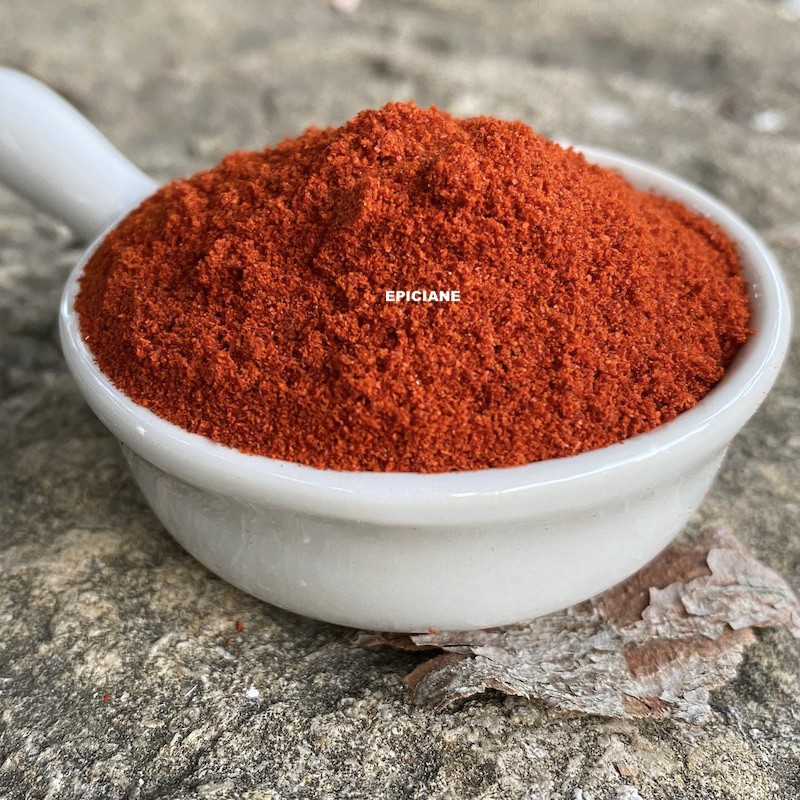
Reference: paprika


This is a very mild paprika, slowly smoked over oak wood with no additives.
It will add flavor to your cured meats, fish, poultry, and meats, giving them a wood-fire cooking taste.
 Delivery
Delivery
Mondial Relay
 Returns
Returns
See conditions
 Payments
Payments
100% secure
Livré en sachet refermable
Culinary Uses:
Smoked paprika has a beautiful deep red color. It’s very mild, with a delightful smoky aroma, somewhat reminiscent of chorizo—which makes sense, as it’s often used in its preparation. This traditional Spanish spice is slowly smoked over oak wood to impart that distinct wood-fire cooking fragrance to dishes.
It pairs well with fish (like trout, salmon, mackerel, and sardines) and poultry (especially chicken). On red meats, it gives a smoky barbecue flavor, perfect when winter weather discourages outdoor grilling! It’s also delicious on sautéed potatoes and fries—just sprinkle it over them right after frying, as you would with salt.
Don’t hesitate to use it in Mexican dishes and even in paellas! Sprinkled on pan-seared sausages or merguez, it works wonders. And if you make your own cured meats, consider using it in chorizos, sausages, and merguez—the applications are endless!
Who Am I?
Origin: Spain
Scientific Name: Capsicum annuum
This product is made by grinding the mature, healthy fruits of the Bola, Jaranda, and Jariza varieties of Capsicum annuum. These fruits are first dried and smoked through a traditional method using green oak or oak smoke.
Like all peppers from the same family, paprika is an annual herbaceous plant in the large Solanaceae family (which includes tomatoes and eggplants), reaching up to 80 cm in height with solitary white flowers at the leaf axils. The fruit is fleshy, conical, and a brilliant red when ripe. Peppers are harvested at full maturity, smoked over oak wood, and then ground.
A Bit of History:
Paprika, along with sweet peppers and all other peppers, originated in Central and South America and was brought back by Portuguese and Spanish conquistadors.
It wasn’t until the 17th century that the pepper family began to be widely cultivated in Europe.
Data sheet
 Anne Marie P.
Anne Marie P.
Bien
 Jean-Philippe L.
Jean-Philippe L.
Bien

 Anne Marie P.
Anne Marie P.
Bien
 Jean-Philippe L.
Jean-Philippe L.
Bien

Reference: paprika
Reference: 20813701
Reference: 00033663-0001
Reference: 10707402
Reference: 00033663-0001
Reference: 508212501
Reference: 10814501
Reference: 12M6951701
Reference: 20813701
Reference: pilipili
Reference: paprika

This is a very mild paprika, slowly smoked over oak wood with no additives.
It will add flavor to your cured meats, fish, poultry, and meats, giving them a wood-fire cooking taste.